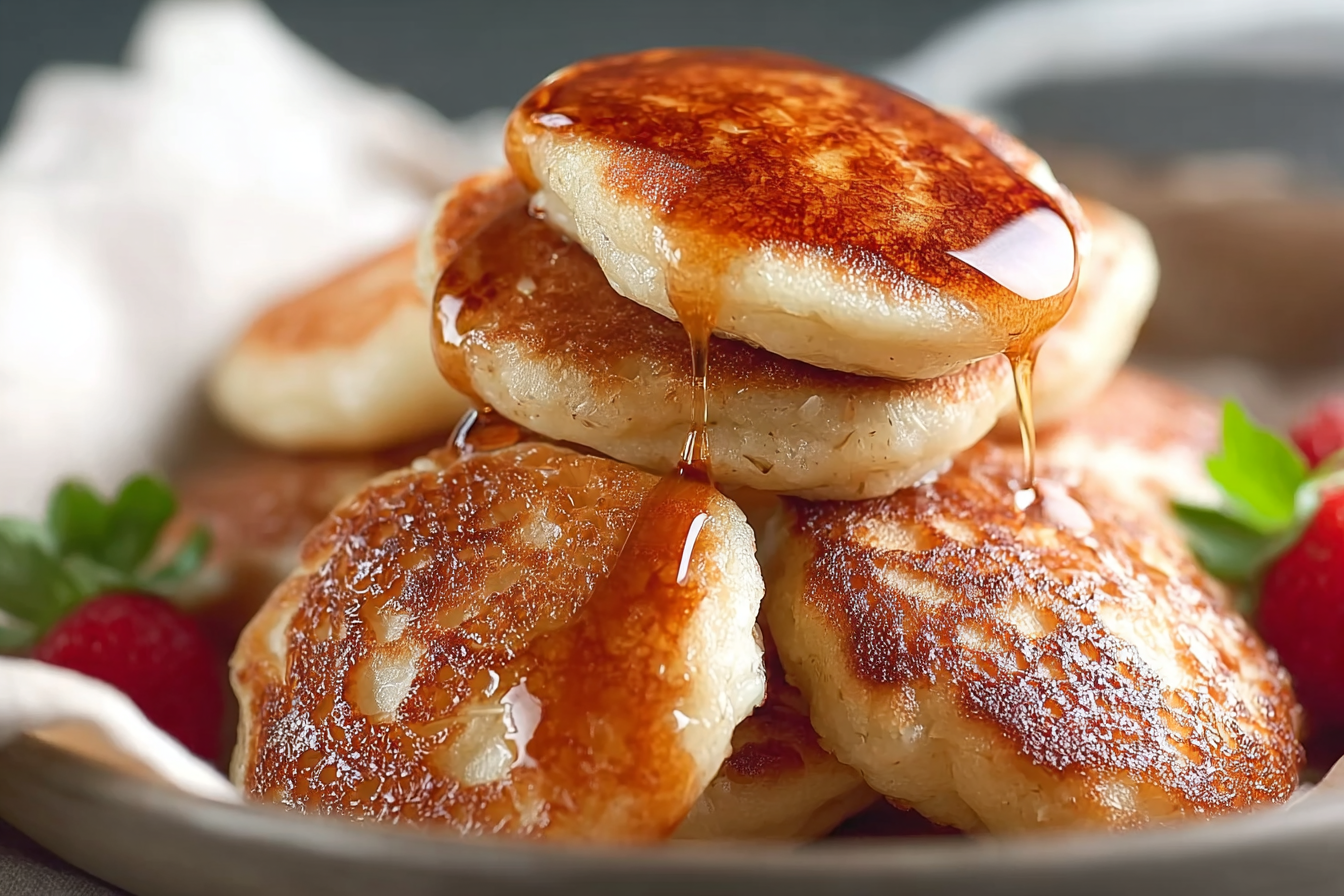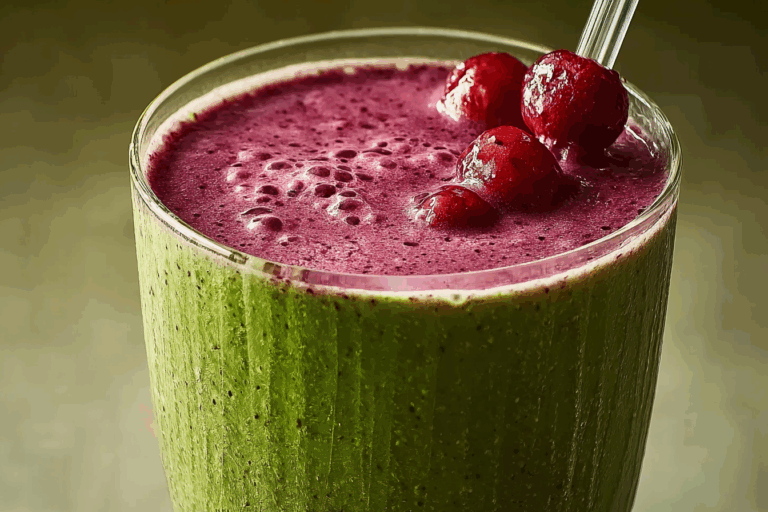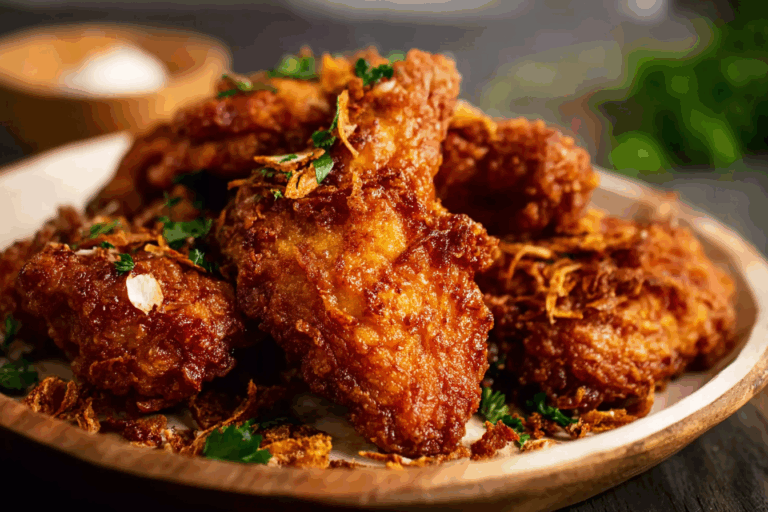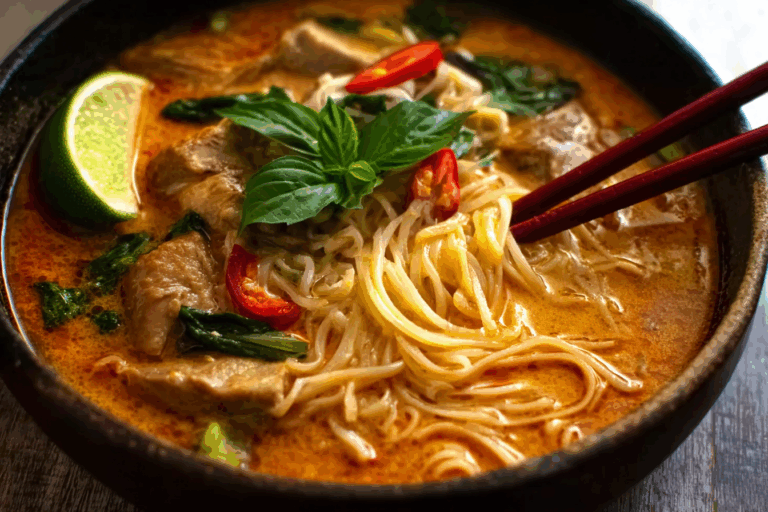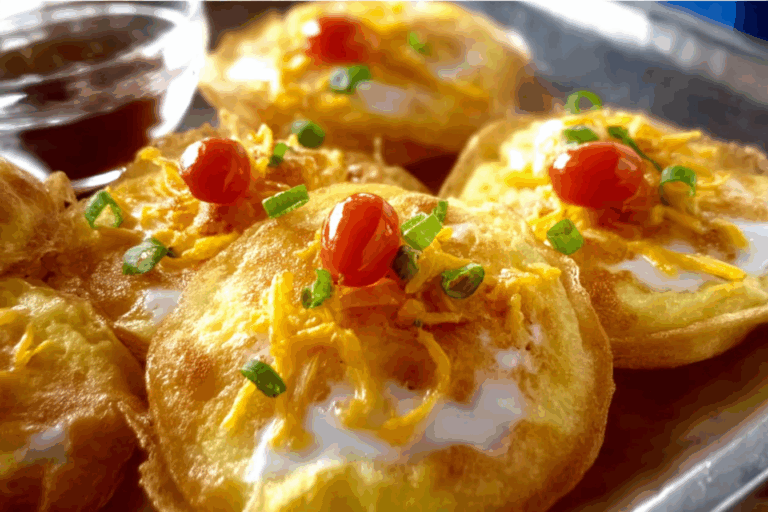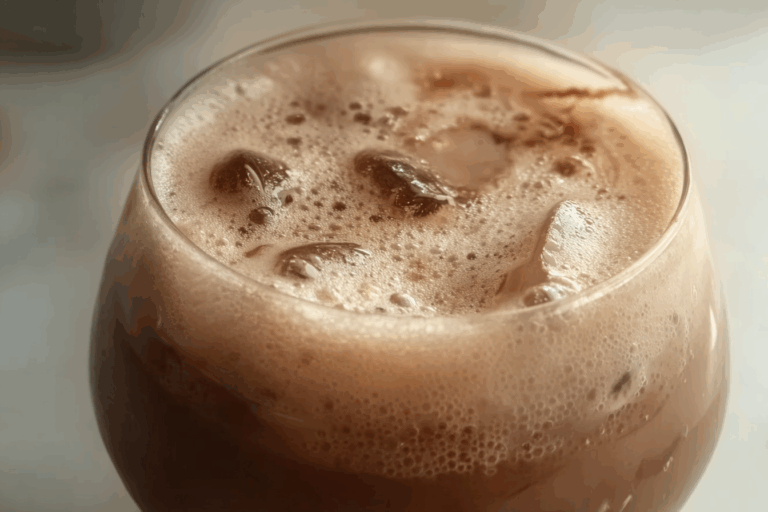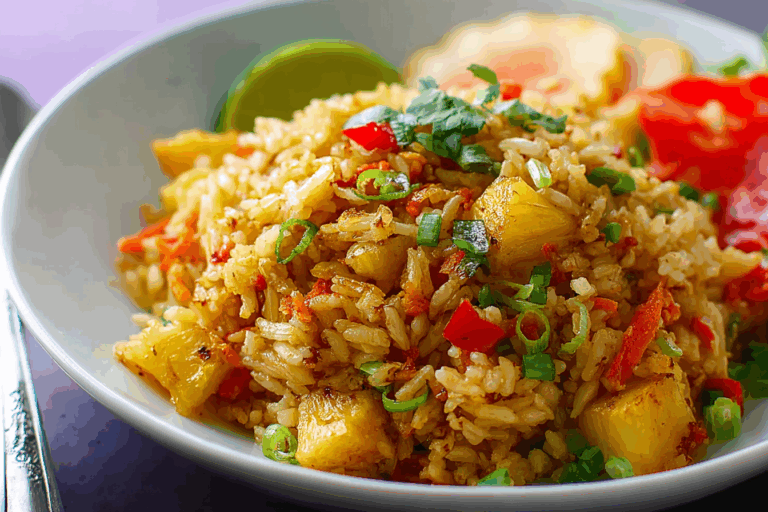Thai Coconut Pancakes: How To Make The Sweetest Dessert
Thai Coconut Pancakes are one of the most beloved street foods in Thailand, capturing hearts with their delicate balance of crispy rice flour shells and creamy coconut fillings. Known locally as Kanom Krok, these tiny treats are a symbol of Thailand’s rich culinary heritage.
At Just Thai Recipes, our passion for Thai food stems from personal experience. Lina, the creator behind the site, grew up surrounded by the aromas of sizzling coconut milk and toasted rice flour on the streets of Bangkok. Together with her partner, she turned that childhood nostalgia into a mission: to make Thai cooking accessible for everyone, no matter where they live. On our About page, we share how Just Thai Recipes blossomed into a haven for home cooks, offering authentic recipes that bring Thailand to your kitchen. This article is part of that journey, guiding you through the secrets of making perfect Thai Coconut Pancakes, understanding their cultural roots, and exploring creative twists on this traditional favorite.
Learn more about Thai desserts like Thai Lod Chong Dessert for even more coconut-inspired delights.
Table of Contents
Table of Contents
The Origins of Thai Coconut Pancakes
What Are Thai Coconut Pancakes?
Thai Coconut Pancakes, or Kanom Krok, are a staple at Thai morning markets. Vendors use a special cast iron pan with half-spherical molds to create these bite-sized delicacies. The outer layer is a thin rice flour batter that crisps up beautifully, while the center remains soft and custard-like thanks to a rich coconut milk filling.
These pancakes are often topped with chopped green onions for a savory bite or sweet corn for a touch of sweetness. Whether eaten as a snack or a light dessert, they are the perfect embodiment of Thai cooking’s ability to balance flavors and textures.
Historical and Cultural Significance
Kanom Krok has a long history in Thai culinary tradition. It was once a popular temple offering and has since become a street food favorite. The dish’s simplicity—made from rice flour, coconut milk, and sugar—reflects Thailand’s agrarian roots where rice and coconuts are plentiful. Today, Thai Coconut Pancakes are celebrated for their versatility, enjoyed plain or with a variety of creative toppings.
Print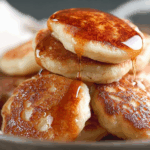
Thai Coconut Pancakes: How To Make The Sweetest Dessert
- Prep Time: 20 minutes
- Cook Time: 20 minutes
- Total Time: 40 minutes
- Yield: 4 servings 1x
- Category: Dessert
- Method: Pan-Fried
- Cuisine: Thai
- Diet: Vegetarian
Description
These traditional Thai coconut pancakes, known as Khanom Krok, feature a crispy outer shell made from jasmine rice and rice flour, paired with a creamy coconut filling. Topped with classic green onions or sweet corn, these bite-sized treats are cooked in a special pan until golden brown and best enjoyed warm.
Ingredients
- 50 g cooked jasmine rice
- 50 g rice flour
- 1 cup water
- ¼ cup coconut milk
- ¼ cup shredded dried coconut (or fresh if available)
- 30 g palm sugar, chopped
- ¼ teaspoon salt
- 1 cup coconut milk (for filling)
- 2 tablespoon granulated sugar
- ¼ teaspoon salt (for filling)
- 2 tablespoon rice flour (for filling)
- Coconut oil for greasing the pan
- Optional toppings: chopped green onions, cooked sweet corn, cooked taro cubes
Instructions
- Place all shell ingredients in a blender and blend until smooth.
- In a bowl, whisk rice flour, sugar, and salt for the filling until clump-free. Add coconut milk and whisk until sugar dissolves. Set aside.
- If batters are made ahead, bring to room temperature. Thin shell batter with water if too thick.
- Prepare toppings and a cooling rack.
- Heat the pan to 325°F. Test readiness by sprinkling water—if it sizzles, it’s ready.
- Brush half the holes with coconut oil and stir both batters before each use.
- Add ½ tablespoon shell batter to each hole, then 1 teaspoon filling into the center. Wiggle slightly to spread.
- Cook for 1–2 minutes, then add toppings. For heavier toppings, let cakes set slightly before adding.
- Continue cooking until bottoms are crispy and tops are set (about 5 minutes). If needed, cover with a lid to steam tops for 1 minute.
- Remove cakes using a toothpick or skewer to push up and a spoon to scoop out. Cool slightly on a rack and serve warm.
Notes
- Both batters can be stored in the fridge. Bring to room temp before using.
- Thin shell batter with water if it thickens during storage.
- These pancakes are best eaten fresh and do not store well.
- Use a nonstick or cast iron pan for best results.
Nutrition
- Serving Size: 4 pancakes
- Calories: 210
- Sugar: 8g
- Sodium: 120mg
- Fat: 9g
- Saturated Fat: 7g
- Unsaturated Fat: 2g
- Trans Fat: 0g
- Carbohydrates: 30g
- Fiber: 1g
- Protein: 2g
- Cholesterol: 0mg
Keywords: Thai coconut pancakes, Khanom Krok, Thai dessert, coconut pancake recipe
Ingredients and Variations of Kanom Krok
Traditional Ingredients
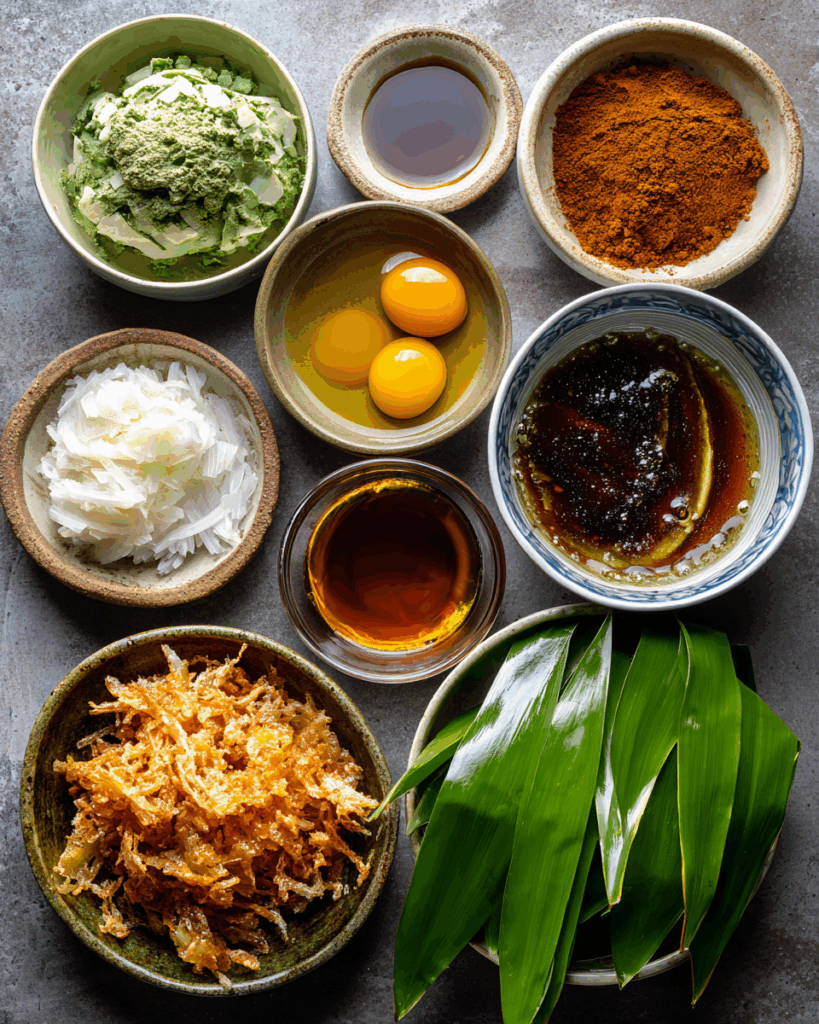
The beauty of Thai Coconut Pancakes lies in their simplicity. To make them, you need ingredients commonly found in Thai kitchens. For the shell batter, you’ll use 50 grams of cooked jasmine rice, 50 grams of rice flour, 1 cup water, ¼ cup coconut milk, ¼ cup shredded dried coconut, 30 grams chopped palm sugar, and ¼ teaspoon salt. This mixture creates the thin, crispy shell that holds the creamy filling.
The filling is equally straightforward yet indulgent. It combines 1 cup coconut milk, 2 tablespoons rice flour, 2 tablespoons granulated sugar, and ¼ teaspoon salt. The result is a smooth, slightly thickened cream that becomes custardy as it cooks.
You’ll also need coconut oil for greasing the pan. While neutral oil works, coconut oil enhances the aroma and complements the flavors beautifully. Optional toppings include chopped green onions for a savory contrast, cooked sweet corn for a touch of sweetness, or cooked taro cubes for an earthy note.
Delicious Variations You’ll Love
As Thai Coconut Pancakes gained international popularity, cooks began experimenting with creative twists. Vegan versions replace coconut milk with almond or oat milk and swap granulated sugar for maple syrup or agave nectar. Health-conscious home chefs often reduce sugar and use fresh coconut shavings to make coconut rice pancakes vegan and lower in calories.
Some fusion recipes take inspiration from other cuisines. For instance, coconut rice pancakes Indian style use cardamom and saffron to give a warm, aromatic flavor profile. There are even dessert adaptations where toppings like chocolate chips, sliced bananas, or berries turn Kanom Krok into a sweet indulgence for Western palates.
If you’re looking for simplicity, try easy coconut rice pancakes recipes that skip the dual batter system and use a single batter for quicker preparation.
Discover great ideas like Thai Mango Sticky Rice for more coconut-based desserts to serve alongside Kanom Krok.
How to Make Thai Coconut Pancakes at Home
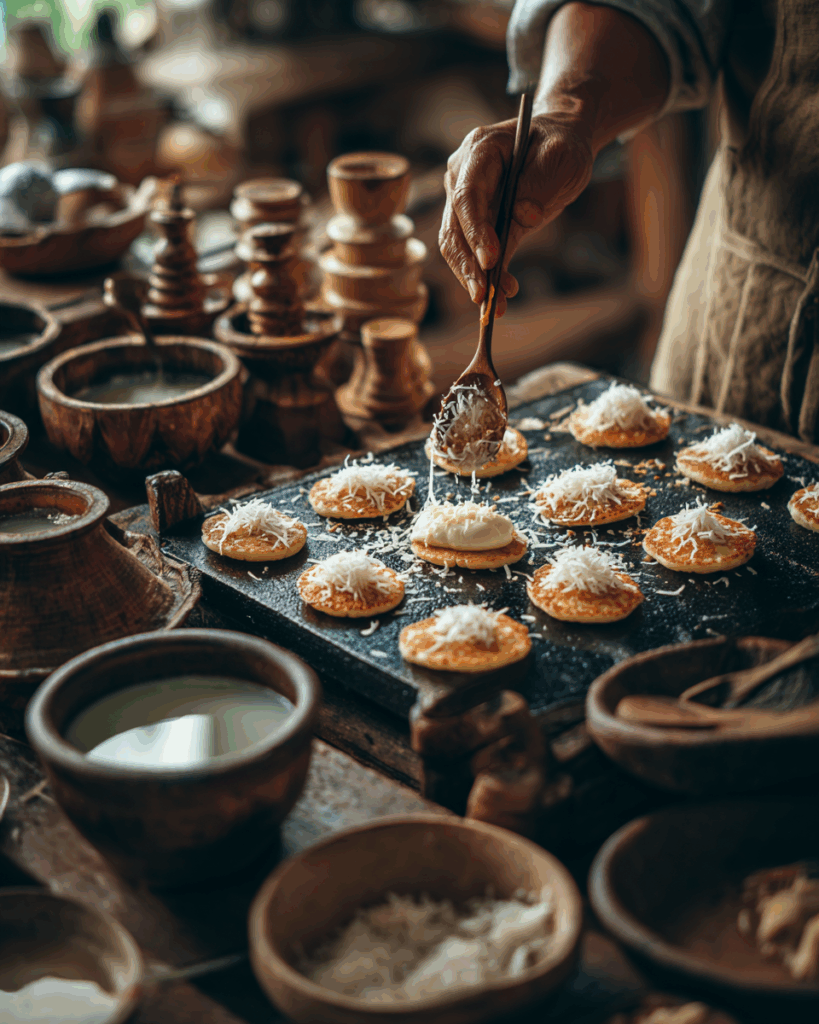
Preparing the Shell Batter
Start by preparing the shell batter that forms the crispy base of your Thai Coconut Pancakes. In a blender, combine 50 grams of cooked jasmine rice, 50 grams of rice flour, 1 cup water, ¼ cup coconut milk, ¼ cup shredded dried coconut, 30 grams chopped palm sugar, and ¼ teaspoon salt. Blend until smooth and silky. The batter should be thin and pourable—this ensures delicate, crispy edges when cooking. If the batter thickens as it rests, add a little water to adjust consistency.
Crafting the Creamy Filling
While the shell batter rests, prepare the filling. In a mixing bowl, whisk together 1 cup coconut milk, 2 tablespoons rice flour, 2 tablespoons sugar, and ¼ teaspoon salt until there are no lumps. This mixture should have a slightly thicker consistency than the shell batter.
Cooking Tips for Crispy Perfection
Heat your kanom krok pan or aebleskiver pan over medium heat (about 325°F). To check if it’s ready, sprinkle a few drops of water; if they sizzle and evaporate immediately, the pan is at the right temperature. Brush the molds with coconut oil to enhance the aroma and prevent sticking.
Pour about ½ tablespoon of shell batter into each mold, then add 1 teaspoon of the filling by dipping the spoon into the center and wiggling slightly to create a smooth layer.
Let the pancakes cook for 1–2 minutes until partially set. Then add toppings such as chopped green onions, sweet corn, or taro. If using heavier toppings like taro, wait a little longer before adding them to prevent sinking.
Cook for about 5 minutes until the edges are golden brown and crispy, and the tops are no longer runny. For a softer top, cover the pan briefly with a lid to steam the filling. To check doneness, gently tilt the pan; if the tops hold firm, they’re ready to be removed.
Carefully lift each pancake with a toothpick or skewer and place on a cooling rack for a few minutes. Remember, Thai Coconut Pancakes are best enjoyed warm and fresh.
For an alternative method and inspiration for coconut-based pancakes, visit The Spruce Eats’ Kanom Krok Recipe which offers additional preparation tips.
Don’t miss our Thai Red Rubies Dessert for another coconut-forward Thai dessert experience.
Pro Tips for the Perfect Kanom Krok
Batter Consistency Matters
When making Thai Coconut Pancakes, the consistency of your batters is everything. The shell batter should be slightly runny, almost like crepe batter, to create the signature thin, crispy edges. If it’s too thick, the pancakes will turn out dense and heavy instead of light and delicate. On the other hand, the filling needs to be slightly thicker so that it sets in the middle without running all over the pan.
Before each pour, always stir both batters well. Rice flour and coconut milk tend to separate as they rest, which can throw off the balance of flavors and textures if not properly mixed.
Mastering the Pan Technique
The key to achieving the perfect Thai Coconut Pancake lies in heat control. Keep your pan at a steady medium heat. If the heat is too high, the bottoms will burn before the filling sets; too low, and the shells won’t crisp properly. For beginners, start by filling only half the pan so you can work at a manageable pace.
Brush the molds with coconut oil after every batch. Not only does this prevent sticking, but it also infuses a subtle coconut aroma that enhances the overall taste.
Creative Toppings to Try
While traditional Kanom Krok toppings like green onions, sweet corn, and taro are delicious, don’t be afraid to get creative. Try adding sesame seeds for a nutty crunch, or a sprinkling of crushed peanuts for a sweet-savory fusion. For a dessert twist, consider sliced bananas or even a drizzle of melted dark chocolate once the pancakes are cooked.
Experimenting with toppings allows you to personalize Thai Coconut Pancakes for breakfast, dessert, or even as a savory snack.
Health and Nutrition of Thai Coconut Pancakes
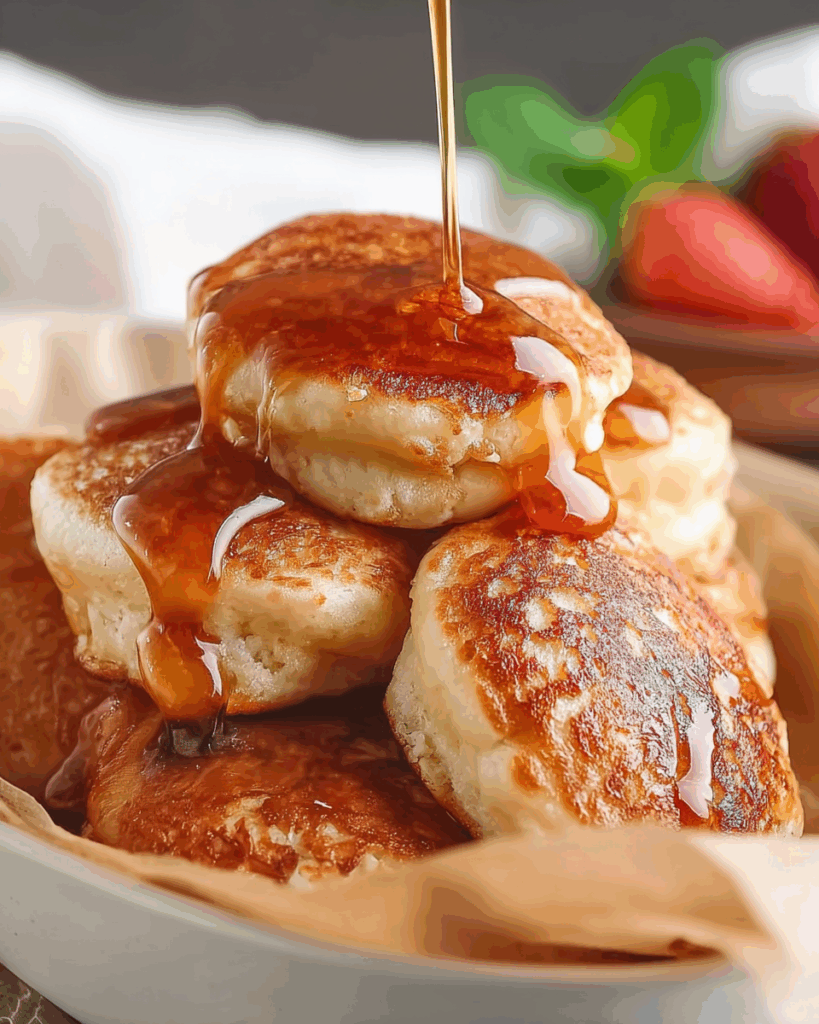
Are Coconut Pancakes Healthy?
Thai Coconut Pancakes offer a unique nutritional profile. Made with coconut milk and shredded coconut, they contain healthy fats that can support heart health and provide sustained energy. Coconut is also a good source of dietary fiber, which aids digestion. The rice flour used in the shell makes these pancakes naturally gluten-free, making them suitable for people with gluten sensitivities.
However, moderation is key. The traditional recipe includes palm sugar and granulated sugar, which add sweetness but also increase the overall calorie content. For a lighter version, you can reduce the sugar in the filling or use a natural sweetener like stevia or monk fruit extract.
Thai Coconut Pancakes Vegan Options
Vegan variations of Thai Coconut Pancakes are easy to create and just as delicious as the original. Swap out the traditional coconut milk for almond milk or oat milk if desired, though using coconut milk helps maintain the authentic flavor. Replace palm sugar with agave nectar or maple syrup to reduce the glycemic load.
Additionally, consider using fresh fruit toppings such as strawberries, blueberries, or sliced kiwi to add vitamins and antioxidants while keeping the dish refreshing. These adjustments not only cater to vegan diets but also appeal to health-conscious eaters looking for a guilt-free indulgence.
By making small tweaks, you can enjoy Thai Coconut Pancakes as part of a balanced diet without compromising on their signature taste and texture.
Pairing Thai Coconut Pancakes With Other Dishes
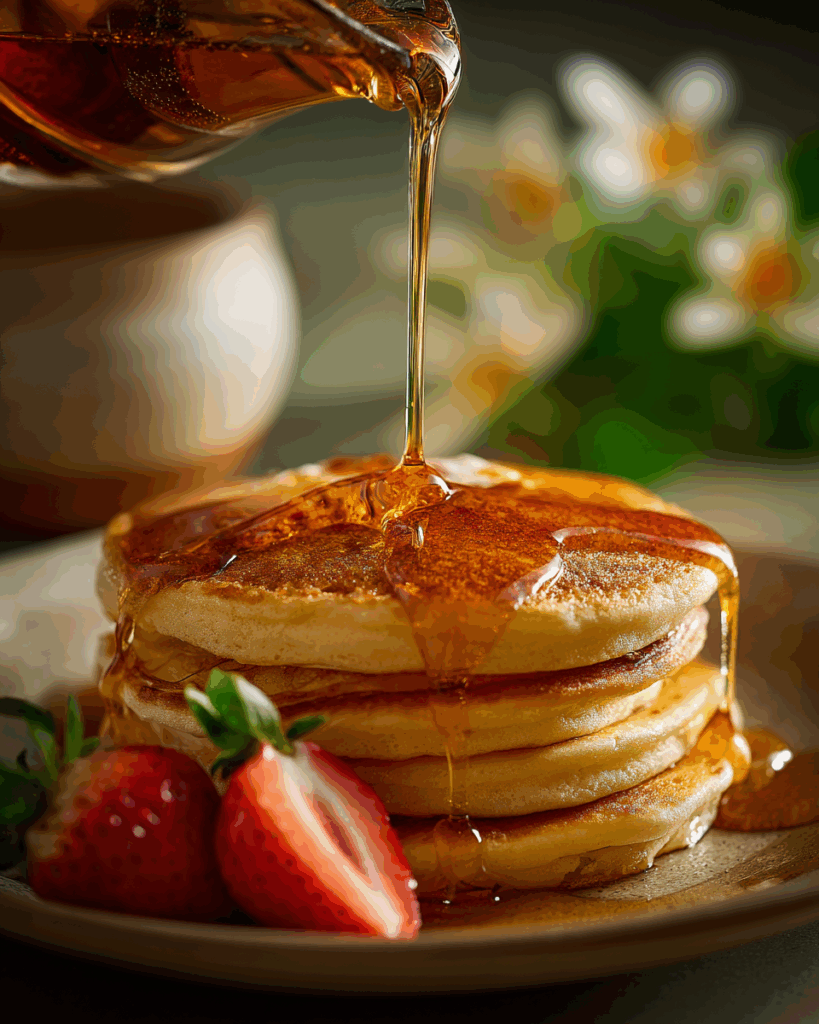
Coconut Rice Pancakes With Coconut Milk Combinations
Thai Coconut Pancakes are incredibly versatile, making them ideal for pairing with a variety of flavors and textures. For a light and tropical combination, serve them alongside a fresh fruit salad featuring mango, pineapple, and papaya. The natural sweetness and acidity of tropical fruits complement the creamy coconut filling perfectly.
For a heartier pairing, enjoy Thai Coconut Pancakes with a warm cup of Thai tea or coffee. The slight bitterness of the tea balances the sweetness of the pancakes and creates a comforting snack experience.
You can also pair these pancakes with savory dishes. The slight saltiness in the filling allows them to act as a side for mildly spiced Thai curries or soups. Try placing a few pancakes alongside coconut milk-based dishes to create a harmonious flavor profile.
Thai Desserts That Pair Well
To create a full Thai dessert spread, pair Kanom Krok with other coconut-based treats like coconut sticky rice or coconut ice cream. These combinations bring together various textures—from the chewiness of sticky rice to the refreshing chill of coconut ice cream—for a truly indulgent dessert platter.
For a unique twist, serve Thai Coconut Pancakes with a drizzle of salted caramel or a sprinkle of toasted sesame seeds to elevate their flavor and appeal to modern palates.
Whether as a standalone snack or part of a larger meal, Thai Coconut Pancakes are adaptable enough to complement both sweet and savory options, making them a delightful addition to any menu.
Common Questions About Thai Coconut Pancakes
Are Coconut Pancakes Healthy?
Coconut pancakes, especially the traditional Thai version, can be part of a balanced diet when eaten in moderation. The main ingredients—coconut milk and shredded coconut—provide beneficial medium-chain triglycerides (MCTs) that support metabolism and satiety. They’re also gluten-free due to rice flour, making them suitable for those with gluten sensitivities. However, because they are often sweetened with palm sugar and served as a dessert, it’s best to enjoy them occasionally rather than as a daily treat. For a healthier version, consider reducing the sugar or substituting it with natural sweeteners.
What Is a Vibibi in English?
Vibibi refers to coconut pancakes from East Africa, particularly popular in Swahili-speaking regions. While similar to Thai Coconut Pancakes in their use of coconut milk and rice flour, Vibibi typically have a thicker, fluffier texture and are cooked flat like traditional pancakes rather than in molded pans. Both desserts share the rich coconut flavor that makes them irresistible but are rooted in distinct culinary traditions.
What Is a Traditional Thai Coconut Pancake?
A traditional Thai coconut pancake, or Kanom Krok, is a beloved street food in Thailand. It features a thin, crispy shell made from a rice flour batter and a creamy, slightly sweet coconut milk filling. The pancakes are cooked in a specially designed cast iron pan with small, round molds, which gives them their signature shape and texture. Often topped with green onions, corn, or taro, these mini pancakes are enjoyed warm and fresh for the best flavor and texture.
Is Coconut Rice Healthy or Not?
Coconut rice can be healthy if consumed in moderation. Coconut milk adds richness and healthy fats, while rice provides energy through carbohydrates. However, the calorie content is higher due to the coconut milk, so portion control is key. Choosing light coconut milk or mixing regular coconut milk with water can lower the fat content without compromising too much on flavor.
Serving and Storing Thai Coconut Pancakes
Serving Tips for Best Flavor
Thai Coconut Pancakes are best enjoyed warm and fresh straight from the pan. When served immediately, the outer shell retains its crisp texture while the filling remains creamy and slightly molten. This contrast between the crispy shell and the soft, custardy center is what makes them so irresistible.
To elevate the presentation, arrange the pancakes on a platter lined with banana leaves for a traditional Thai touch. Sprinkle them lightly with toasted sesame seeds or shredded coconut for added aroma and texture. For a modern twist, dust them with a little powdered sugar or drizzle with a thin stream of honey.
These pancakes also make for an excellent afternoon snack alongside a hot beverage like Thai tea, jasmine tea, or even a light coffee. The subtle bitterness of tea balances the sweetness of the pancakes beautifully, enhancing the overall experience.
Why They Don’t Keep Well
One of the defining characteristics of Kanom Krok is their delicate texture, but this is also why they don’t store well. After a few hours, the crispy shell tends to absorb moisture from the filling and toppings, resulting in a soggy and less enjoyable pancake.
If you do have leftovers, they should be stored in an airtight container at room temperature and eaten within a few hours. Reheating in a toaster oven can bring back some crispness, but they are never quite the same as when freshly made. For the best experience, prepare only as many pancakes as you plan to serve and enjoy them warm from the pan.
Advanced Variations and Global Inspirations
Coconut Rice Pancakes Recipes From Around the World
While traditional Thai Coconut Pancakes remain a favorite, variations inspired by other cultures showcase the versatility of coconut-based desserts. In East Africa, Vibibi offers a thicker, fluffier take on coconut pancakes, flavored with cardamom for an aromatic twist. Similarly, in India, coconut rice pancakes are often infused with spices like cinnamon and nutmeg, creating a warm and comforting dish perfect for breakfast.
Modern recipes also cater to diverse dietary preferences. Vegan versions eliminate all animal products by using plant-based milk alternatives and natural sweeteners. Gluten-free adaptations, already inherent in the use of rice flour, ensure these pancakes remain accessible to a wide audience.
For a Western dessert approach, creative home cooks have begun experimenting with toppings such as caramel sauce, chocolate chips, or even berries. These adjustments transform Kanom Krok from a humble street snack into an elegant dessert for dinner parties.
Babin Thai Coconut Pancakes and Other Global Versions
Babin, another type of Thai coconut pancake, differs slightly from Kanom Krok. It is denser, chewier, and often made without a filling. This version is popular in Southern Thailand and is frequently enjoyed as a snack or light breakfast. Babin highlights the adaptability of coconut in Thai desserts, proving how a single ingredient can create multiple delicious outcomes.
Globally, coconut rice pancakes have found their place in various cuisines, with each culture adding its signature flavors and techniques. From soft and fluffy styles to crispy and bite-sized creations, the coconut pancake continues to delight palates worldwide.
Conclusion
Thai Coconut Pancakes are a true reflection of Thailand’s culinary artistry. Their crispy rice flour shells and creamy coconut fillings create a perfect balance of texture and flavor that delights the senses. Whether you enjoy them in their traditional form or experiment with creative variations, these little treats offer a taste of authentic Thai street food right in your own kitchen.
Making Thai Coconut Pancakes at home allows you to customize them to your taste, from classic toppings like green onions and corn to modern twists with fruits or chocolate. Remember, the key to their irresistible texture is serving them fresh and warm straight from the pan.
By embracing the simplicity and versatility of this beloved dessert, you’ll not only impress family and friends but also bring a little bit of Thailand into your home.
FAQs
Is coconut rice healthy or not?
Coconut rice is moderately healthy. It provides healthy fats and essential minerals from coconut milk, but its calorie content is higher than plain rice. When consumed in reasonable portions, it can be part of a balanced diet.
What is a traditional Thai coconut pancake?
A traditional Thai coconut pancake, or Kanom Krok, is a bite-sized treat featuring a thin, crispy rice flour shell and a creamy coconut milk filling. Often cooked in a cast iron pan with round molds, they are topped with ingredients like green onions or sweet corn for a balance of sweet and savory flavors.
What is a Vibibi in English?
Vibibi is the Swahili word for coconut pancakes, a popular East African dessert. Similar in flavor to Thai Coconut Pancakes, Vibibi are fluffier and cooked like regular pancakes rather than in molded pans.
Are coconut pancakes healthy?
Yes, coconut pancakes can be considered healthy in moderation. They contain beneficial fats from coconut milk and shredded coconut, providing energy and some fiber. However, due to the sugar content in traditional recipes, they should be enjoyed as an occasional treat rather than a daily snack.

